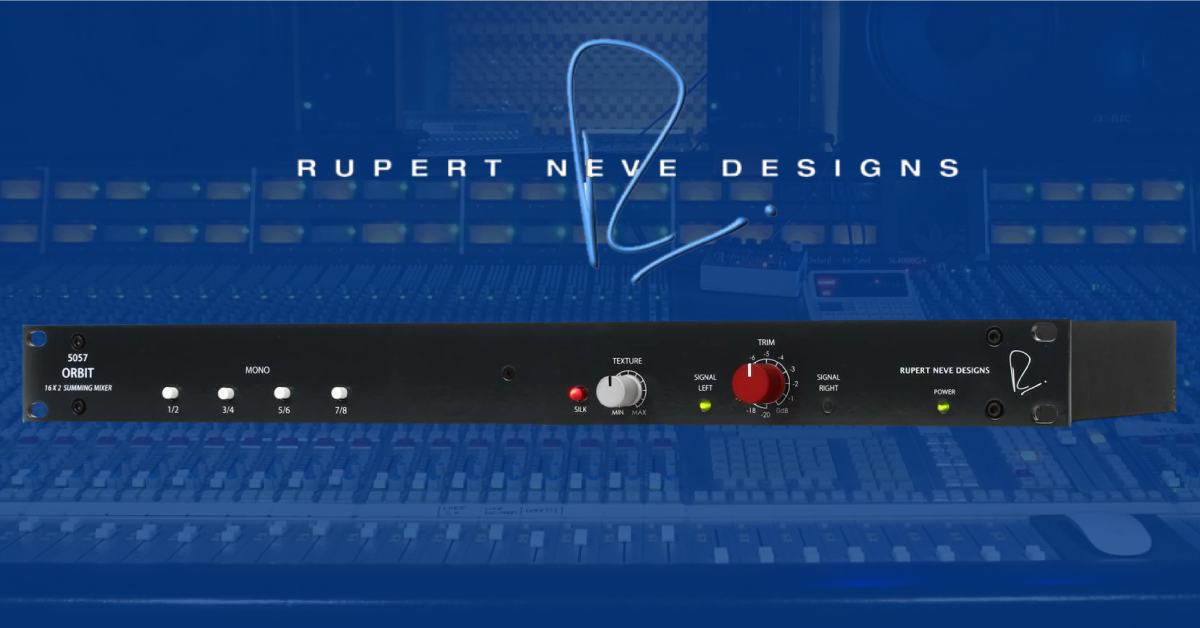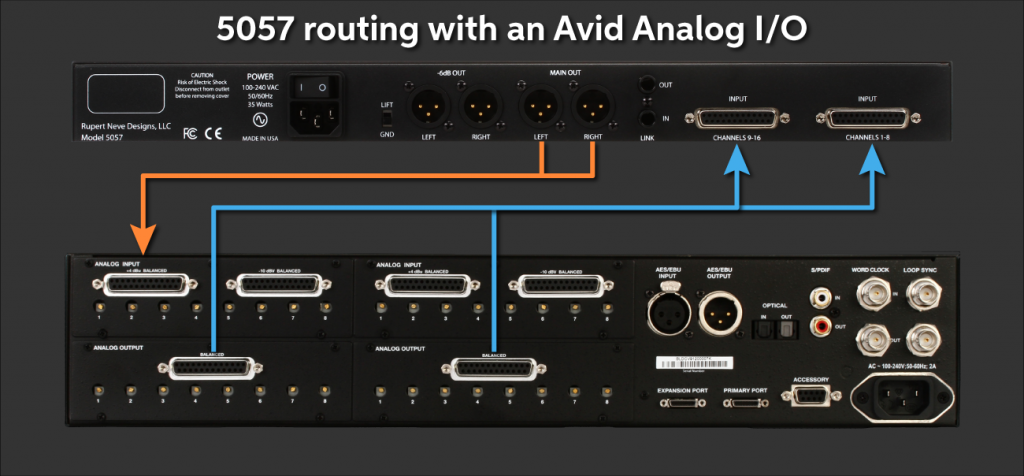Rupert Neve Designs 5057 Orbit Summing Mixer Setup Guide

Rupert Neve Designs has always been well regarded for its summing. The 5057 Orbit summing mixer is carrying on the legacy. We will get to know the connections and the front panel controls. We will also look at adding in processing while in the analog domain.
- Making the connections
- Setting up your DAW and interface for routing and patching
- Adding analog outboard gear
- Front panel controls
Making the connections
Depending on your interface, you will require XLR, TRS, or DB25 connectors to connect the outputs of your interface to the DB25 connectors on the 5057 summing mixer. To connect the 5057 to your interface, simply patch the Main Out connection from the 5057 summing mixer to an open pair of line inputs on your interface.
Note: Monitor outputs not calibrated to line level may cause imbalances in your outputs.
Setting up your DAW and interface for routing and patching
- Follow the setup guide for your audio interface to route the software outputs directly to your physical outputs.
- Route individual audio tracks or buses directly to the software outs to send to the mixer’s summing inputs.
- Disable the input monitoring for the input channels for the stereo return.
- Create a print track to record the audio from the summing mixer back to the interface.
Adding analog outboard gear
Adding outboard gear to this setup is as simple as making the connections.
Processing an individual mono or stereo stem
- Patch the output of the interface to the processor of your choice.
- Plug in the output of the processor to another processor or back to the line inputs on the summing mixer.
Processing the summed mix
- Patch the line out or -6dB line out to the input of the stereo processor.
- Patch the output of the processor to another processor or back to the line inputs on the interface.

Example of how to connect the 5057 to external gear
Front panel controls
The Mono buttons will change the first four stereo pairs to mono signals. This will change their panning from hard left and hard right to straight up the middle.
The Silk button will add saturation to your mix. High and mid frequencies get more saturation in the red mode, and the blue mode adds lower-frequency saturation. Turn the texture knob to dial in the amount of saturation that is right for your mix.
Rupert Neve Designs 5057 Summing Mixer Demo
5 Tips for Better Mixes
Getting the Most from Your Home Studio Gear
Related Articles
When you need help, Sweetwater has the answers!
Our knowledge base contains over 28,000 expertly written tech articles that will give you answers and help you get the most out of your gear. Our pro musicians and gear experts update content daily to keep you informed and on your way. Best of all, it’s totally FREE, and it’s just another reason that you get more at Sweetwater.com.


